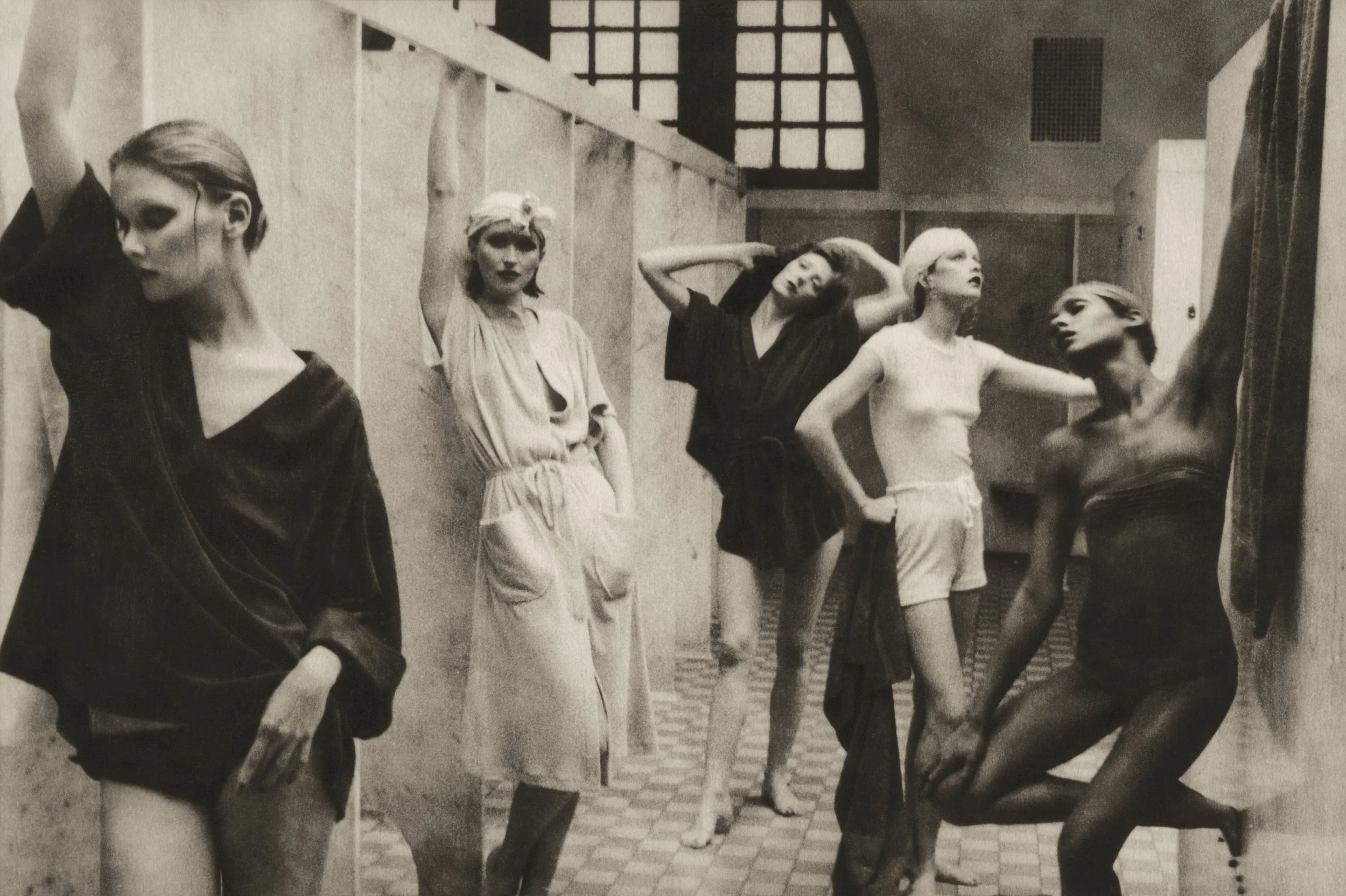Turbeville's Ghostly Women | A Review of “Deborah Turbeville: Photocollage”
© Deborah Turbeville | Untitled (Metamorphosis of Ella M.), from the series ‘L’École des Beaux-Arts’, Paris, early 1900s
Written by: Grecia Espinoza
Deborah Turbeville was a nonconformist and a renegade. The fashion photographer staunchly opposed the prevailing aesthetic norms of her era. Her photos unraveled a world distinctly discordant with the cultural milieu of the 70s and 80s. Rejecting the glossy veneer of mainstream fashion magazines and over-sexualization of the female body, Turbeville delved into the raw recesses of the human psyche. Her images captured a psychologically fraught world laden with the haunted imagery of an ancient past. In Deborah Turbeville: Photocollage by Nathalie Herschdorfer, Turbeville's work is showcased alongside insightful essays that explore her distinctive style and groundbreaking portrayal of femininity in fashion photography.
© Deborah Turbeville | Comme des Garçons, Escalier dans Passage Vivienne, Paris, from the series ‘Comme des Garçons’, Passage Vivienne, Paris, 1980
Turbeville began her career as a fashion editor at Harper’s Bazaar before transitioning into photography in her late thirties. Her early exposure to the fashion world provided a unique vantage point that allowed her to discern the unmet needs of fashion photography. Her drive to develop a unique technique that would reshape fashion photography, would later take her to great heights.
© Deborah Turbeville | Untitled, New York, late 1970s-early 1980s
Turbeville landed on a technique that marked a deliberate and calculated deviation from conventional photography’s polished, pristine images. Her signature style featured soft focus, monochrome or sepia palettes, and images imbued with a grainy, weathered quality. Early in her career, Turbeville vowed to move away from the pretty and instead embraced the ugly and grotesque. Many hours were spent in post-production to achieve this aesthetic, wherein she employed techniques like dust smudging, scratching, tearing and overexposing her images to light. The resulting images were antique, appeared to transcend time, and blurred the distinction between the commercial and the personal.
© Deborah Turbeville | Chateau Raray, Raray, France, 1985
Turbeville's affinity for photocollages added a layer of complexity to her technique. She crafted her collages using the same unpolished aesthetic characteristic of her style. She used brown construction paper to support the images and attached them with pins and tape. This meticulous attention to detail and craftsmanship distinguished Turbeville from her contemporaries and positioned her as a vanguard in experimental photography.
Top: © Deborah Turbeville | From Passport: Concerning the Disappearance of Alix, 1990
Bottom: © Deborah Turbeville | Louisa Posos, Mineral de Pozos, Guanajuato, Mexico, January 1991
Beyond her unique postproduction techniques, Turbeville's female subjects also defied conventions. At a juncture when feminist ideals were gaining prominence and images of overly sexualized women symbolized power and autonomy, Turbeville chose to diverge from this trajectory. Her models rarely conformed to the conventional poses and depictions favored by her male counterparts in fashion photography. Rather than objectifying her female subjects, she captured images that focused on the woman’s inner life. Her women appeared trapped in their solitude, detached and introspective. In this way, Turbeville's imagery not only offered a counterpoint to the prevailing feminist narrative but also presented an alternative perspective on femininity that was reflective, nuanced, and distinctly Turbeville's own.
© Deborah Turbeville | Louisa in My House (Casa No Name), San Miguel de Allende, Guanajuato, Mexico, January 1991
Featured in Deborah Turbeville: Photocollage is Turbeville's "Bathhouse" series, originally published in Vogue in May of 1975. This series is emblematic of Turbeville's unique vision and artistic brilliance. In an era dominated by sanitized imagery, the series disrupted that predictability, transporting models to the evocative setting of a dilapidated public bathhouse. The images capture five models amidst weathered surroundings, creating a haunting and contemplative atmosphere. This deliberate choice of location and Turbeville's expert manipulation of light and composition elevate these photographs beyond typical fashion imagery. “Bathhouse,” among other images featured in the book, can be viewed on display at Photo Elysee from November of 2023 through February of 2024.
© Deborah Turbeville | Asser Levy Bathhouse, from the series ‘Bathhouse’, New York, 1975
In the meantime, Deborah Turbeville: Photocollage offers readers an intimate encounter with the groundbreaking work of a true visionary. Nathalie Herschdorfer's meticulous curation and insightful essays provide a comprehensive look into Turbeville's distinct style. The book is a tacit nod to the restless souls and storytellers who, like Turbeville, understand that beauty is often found in the margins, in spaces that defy convention.








